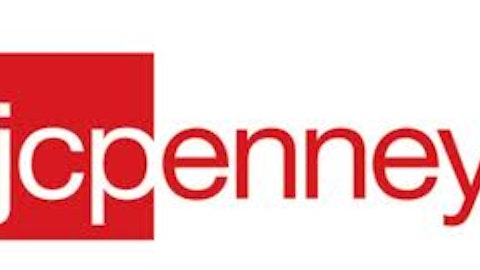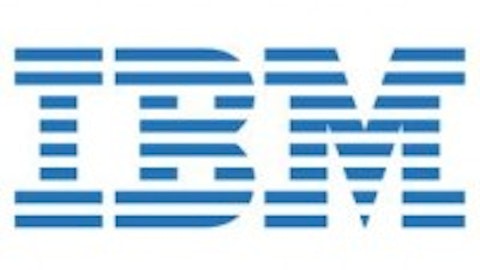Tyson Foods, Inc. (NYSE:TSN) is the largest meat processor in the U.S., working with chicken, pork, and beef. Its recent quarterly results showed weaker-than-expected results, as consumers and restaurants switched to cheaper chicken from beef. The big news was the fact that Tyson cut its full-year guidance.

The company’s stock was down nearly 5% on the news, but has slowly recovered as investors digest it. For the first quarter of 2013, Tyson saw chicken volume up 0.1%, beef down 3.9%, and pork down 2.2%. Tyson posted EPS of $0.36, compared to $0.44 for the same period last year and well below the consensus estimate of $0.45. CEO Donnie Smith noted that Tyson Foods, Inc. (NYSE:TSN)’s gross margins fell as its “beef segment suffered margin compression as consumers opted for the relative value of chicken.”
Some new initiatives for Tyson include joining forces with healthy and low-calorie food specialist Hungry Girl Lisa Lillien for new variants of low-calorie meals for calorie-conscious customers.Tyson Foods, Inc. (NYSE:TSN) is also focusing on Mexican food, as is evident from its strategic acquisition of the Mexican snacks and tortilla producer Don Julio Foods.
The other big positive for the company is its international presence. The company operates in Canada, Central America, China, the European Union, Japan, Mexico, Middle East, South Korea, Russia, Taiwan and Vietnam. However, international sales accounted for only 16% of sales, leaving plenty of room for growth. This growth should be driven by a rising middle class across all the developing nations.
Also, its chicken segment should continue to see strong momentum as there is an increasing number of health-conscious consumers that opt for chicken instead of red meat because of the associated health risks.
Stacking up the comps
Hormel Foods Corporation (NYSE:HRL) is a maker of various meat products, including fresh, frozen, cured, smoked, cooked and canned meat. Hormel Foods Corporation (NYSE:HRL)’s key segment is refrigerated foods, accounting for some 50% of revenues. This segment includes the Hormel Foods Corporation (NYSE:HRL) Refrigerated, Farmer John, Burke Corporation (Burke) and Dan’s Prize operating segments.
Hormel Foods Corporation (NYSE:HRL) is also relatively diversified when it comes to products. During the first quarter of 2013, a decline in the revenue from refrigerated foods was neutralized by an increase in prices across all other segments. Earlier this year, Hormel Foods Corporation (NYSE:HRL) bought the U.S.-based Skippy peanut butter business for some $663 million. Hormel Foods Corporation (NYSE:HRL) expects annual sales of Skippy to come in at $370 million. Although I see this as a positive diversification attempt that should lead to higher margins, I still prefer the large protein
producers, namely Tyson Foods, Inc. (NYSE:TSN), which will be the big benefactors as emerging nations urbanize.
Smithfield Foods, Inc. (NYSE:SFD)
is the largest hog producer and pork processor in the world. Its pork segment consists of three wholly-owned U.S. fresh pork and packaged meat subsidiaries. Its hog production segment includes hog production operations located in the U.S., and its international segment includes the international meat processing operations that produce a wide variety of fresh pork, beef, poultry and packaged meat products, including cooked hams, sausages, hot dogs, bacon, and canned meats.
The company’s key focus of late is the introduction of healthier products with low sodium content. Also, the company is working on restructuring its pork segment. Thus far, its efforts have improved annual profits by approximately $125 million. Now, the company is in the process of executing a cost savings program aimed at lowering the cost structure and enhancing profitability of the domestic hog production business. This initiative is expected to result in an annual improvement in profits of approximately $90 million by fiscal-year 2014.
One of the big headwinds for Smithfield Foods, Inc. (NYSE:SFD) is that the profitability of hog production is directly related to the market price of live hogs and the cost of feed grains such as corn and soybean meal. This has in turn hurt margins of late and could further pressure margins as grain prices rise due to drought conditions.
Hedge fund trade
Heading into 2013, Tyson had the most hedge fund interest, with 25 long on the stock. The top hedge fund owner by market value was Cliff Asness’ AQR Capital, with a $82.5 million position in the stock, comprising 0.4% of its 13F portfolio (check out AQR’s small cap picks).
In a close second was Smithfield Foods, Inc. (NYSE:SFD), with 24 hedgies long the stock, a 20% increase from the third quarter. This includes the top hedge fund owner Adage Capital, with a $65 million position making up 0.2% of its 13F portfolio (see Adage’s small cap picks).
Hormel had the lowest hedge fund interest going into 2013, with only seven hedge funds long the stock, a 36% decrease from the third quarter. Worth noting is that the top hedge fund owner was “small-cap king” Chuck Royce’s Royce & Associates with a $24.8 million stake, which made up a mere 0.1% of its total 13F portfolio (check out Royce’s top picks).
By the numbers
From a valuation perspective, both Tyson and Smithfield Foods, Inc. (NYSE:SFD) are the cheapest.
| Tyson | Hormel | Smithfield | |
| Forward P/E | 10 | 18.5 | 10 |
| Price to sales | 0.26 | 1.31 | 0.29 |
So, which would be the better long-term investment? It appears that Tyson Foods, Inc. (NYSE:TSN) has the better return capabilities and better balance sheet.
| Tyson | Smithfield | |
| Return on equity | 8.8% | 7.1% |
| Debt to equity | 40% | 74% |
The bottom line
The recent weakness that Tyson Foods, Inc. (NYSE:TSN) has noted is likely a short-term setback and the company should perform nicely going forward. The company is well positioned in the meat industry and is also one of the cheapest stocks in its sector. The long-term catalyst will be rising incomes in developing markets, which should boost the demand for protein products.
The article Don’t Be Too Chicken to Buy This Stock originally appeared on Fool.com is written by Marshall Hargrave.
Copyright © 1995 – 2013 The Motley Fool, LLC. All rights reserved. The Motley Fool has a disclosure policy.

